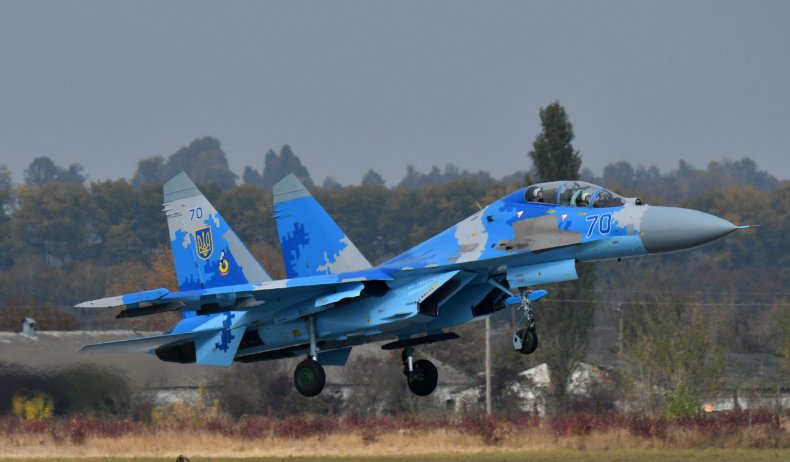Ukraine's military has come a long way since Russia seized Crimea in 2014, but even with better-trained troops and equipment, shortcomings in its air capabilities leave Kyiv vulnerable to Moscow-led forces.
With NATO and U.S. help, Ukraine has modernized its tanks, armored vehicles and artillery systems. Its equipment now includes Humvees, patrol boats, radar systems, and anti-tank Javelin missiles.
Kyiv can now call upon 150,000 combat-ready troops, compared with only 6,000 eight years ago.
With fear that Russia's massed troops by Ukraine's border could result in an incursion, a poll in December by the Kyiv International Institute of Sociology also showed a third of Ukrainians would put up armed resistance to Moscow-led military actions.
But despite Ukraine's extra personnel, hardware and no shortage of will, Russia's superiority in the air is an effective counter to those modernization gains.
"There are severe capability gaps, particularly when it comes to air defense," said Gustav Gressel, senior policy fellow at the European Council on Foreign Relations (ECFR).
"The air forces have not been used in the Donbas war," he told Newsweek, referring to hostilities in eastern Ukraine between Kyiv-led forces and Moscow-backed separatists sparked by the Crimean annexation.
"They have been underfunded and all the money went into modernizing the land forces, which are needed to stem the tide in Donbas."
"Their equipment is, by and large, outdated, it is basically Soviet," he added.
Ukraine uses nearly 125 combat-capable aircraft, including 4th-generation fighter workhorses Sukhoi Su‑27 and Mikoyan MiG‑29, according to Military Balance 2021.
But the newest fighter jet in the Ukrainian army was built 30 years ago.
Low pay and a fixation with bureaucracy, tying pilots up with paperwork, has sparked an exodus of the very people tasked with protecting Ukraine's skies from Russia's threats.
A report by the Kyiv Post last July said that nearly 140 people, among them pilots, had left the Armed Forces over the previous two years.
One pilot told the paper he had just between 35 and 80 flight hours a year, compared with the 180-hour annual requirement for NATO pilots.
Ukraine requires assistance on everything from radars to anti-aircraft missiles to command and control, Foreign Policy reported. The country also needed to coordinate air defense to discriminate targets and get new coastal defense missiles.
The threat from the air posed by Russia is considerable, especially given that in the event of an advance, it is likely to move forward S-400 air defense batteries, creating no-go zones for Ukrainian air power.
Russia could use missiles to knock out Ukraine's runways, airports, and fighters on the ground, Jim Townsend, a former deputy assistant secretary of defense for Europe and NATO, told Foreign Policy.
The Russian air force will draw on Su-27s and Mig 29s, while Sukhoi Su-35s and Su-34s could strike high-value targets.
"If it's one against one, the Ukrainians are very capable of standing their ground," said Gessel.
"The problem is that the Russians could push through the lines where they are weakest because of air superiority and information superiority, cutting Ukrainians off from knowing where the Russians are advancing."
"By interdicting them by air, the Russians can pick their fight and concentrate superior forces where they are needed at a time they are needed and then withdraw or move away."

World - Latest - Google News
January 26, 2022 at 08:40PM
https://ift.tt/3IFWeFE
Ukraine's 30-Year-Old Fighter Jets Hand Russia the Air Advantage in Any War - Newsweek
World - Latest - Google News
https://ift.tt/2SeTG7d

No comments:
Post a Comment